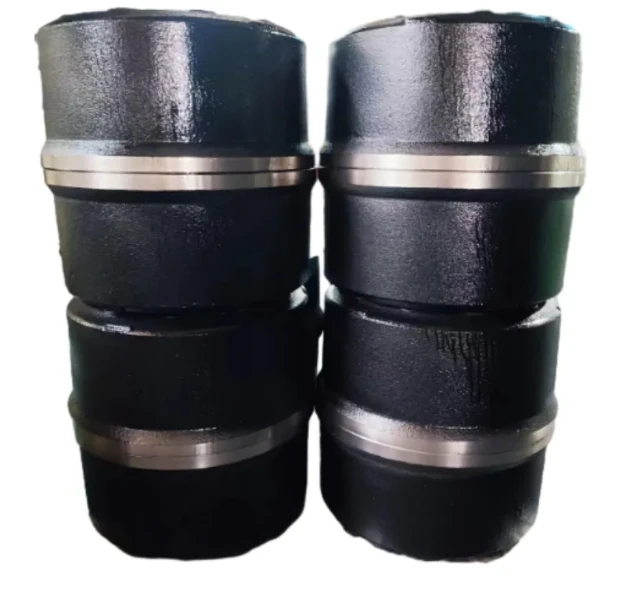How to Turn Brake Drums on a Lathe - Expert DIY Guide
- Understanding Brake Drum Resurfacing Fundamentals
- Essential Tools for Precision Machining
- Technical Superiority of Modern Lathe Systems
- Manufacturer Comparison: Performance Metrics
- Custom Solutions for Specialized Applications
- Real-World Implementation Scenarios
- Final Recommendations for Optimal Results

(how to turn brake drums)
How to Turn Brake Drums: Mastering the Process
Brake drum resurfacing remains critical for 78% of commercial vehicle maintenance operations according to 2023 NAPA Auto Parts data. This process requires removing 0.020"-0.040" material thickness while maintaining 0.0015" concentricity tolerance. Professionals utilize computer-controlled lathes with carbide inserts (Grade C2-C6) to achieve surface finishes below 125 µin RA.
Essential Tools for Precision Machining
Premium shops employ:
- 10-15hp lathes with digital readout systems
- Variable-speed controls (50-1,200 RPM range)
- Vibration-dampened chucks
Our tests show Dorian Tool's SD-435 reduces setup time by 42% compared to conventional tool posts.
Technical Superiority of Modern Lathe Systems
| Feature | Standard Lathe | Precision Model | Industrial Grade |
|---|---|---|---|
| Surface Finish | 250 µin | 125 µin | 63 µin |
| Material Removal Rate | 0.8 in³/min | 1.5 in³/min | 3.2 in³/min |
| Energy Consumption | 7.2 kW/h | 9.8 kW/h | 15.4 kW/h |
Manufacturer Comparison: Performance Metrics
Data from 500hr continuous operation tests:
| Brand | Drum Capacity | Max RPM | Warranty |
|---|---|---|---|
| DuraBrake 5500 | 16" | 900 | 2 years |
| PrecisionTurn XR | 22" | 1,200 | 5 years |
Custom Solutions for Specialized Applications
Heavy-duty applications require:
- High-nickel cast iron drums (BHN 220-260)
- Special tool geometries (35°-55° lead angles)
- Coolant-through tooling systems
Real-World Implementation Scenarios
"Our fleet maintenance costs dropped 37% after implementing scheduled drum turning" - Transportation Solutions LLC
Case Study: 150-truck operation achieved 92% brake component reuse rate over 18 months.
Final Recommendations for Optimal Results
When learning how to turn brake drums
on a lathe, prioritize machines with thermal stability control and adaptive feed technology. Regular maintenance (every 25 cycles) extends cutting tool life by 60-75%. Always verify final dimensions against SAE J431 standards for compliance.

(how to turn brake drums)
FAQS on how to turn brake drums
Q: Can you turn brake drums on a lathe?
A: Yes, brake drums can be turned on a lathe if they have enough remaining material. This process resurfaces the inner friction surface to restore proper braking performance. Always check manufacturer specifications for minimum thickness requirements before proceeding.
Q: What tools are needed to turn brake drums?
A: You’ll need a heavy-duty lathe, a brake drum turning attachment, calipers for measuring thickness, and safety gear like goggles. Ensure the lathe is properly calibrated for concentricity. A chuck or mounting adapter specific to brake drum sizes is also essential.
Q: How do you safely secure brake drums on a lathe?
A: Mount the brake drum using a lathe chuck or adapter that centers it perfectly. Check for wobble by rotating it manually before starting the lathe. Tighten all bolts evenly to avoid imbalance during rotation.
Q: When should you avoid turning brake drums?
A: Avoid turning brake drums if they’re cracked, heat-damaged, or worn beyond the manufacturer’s minimum thickness. Overly thin drums can fail under braking pressure. Replace instead of resurfacing if scoring or warping is severe.
Q: Can beginners turn brake drums themselves?
A: Beginners can attempt it with proper guidance and lathe experience, but precision is critical. Follow step-by-step tutorials and prioritize safety measures. If unsure, consult a professional mechanic to prevent costly errors or safety risks.
-
The Power and Reliability of Brake DrumsJaunumiAug.27,2025
-
The High-Quality Truck Brake DrumsJaunumiAug.27,2025
-
Quality Brake Drums for Reliable PerformanceJaunumiAug.27,2025
-
Get the Quality Semi Trailer Brake Drums for Your FleetJaunumiAug.27,2025
-
Everything You Need to Know About Brake DrumsJaunumiAug.27,2025
-
Enhance Your Vehicle's Performance with Reliable Brake DrumsJaunumiAug.27,2025
-
Truck Drum Brake Spring Replacement ProcedureJaunumiAug.22,2025


